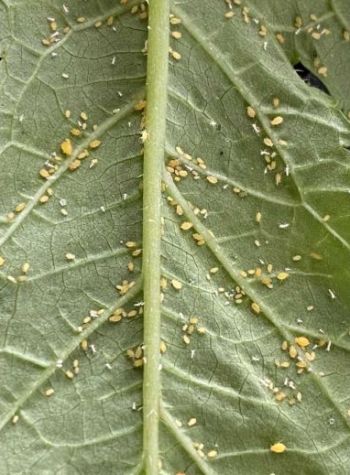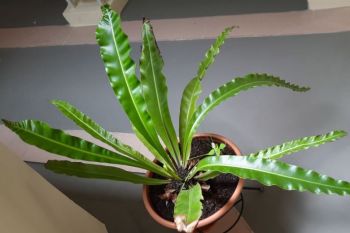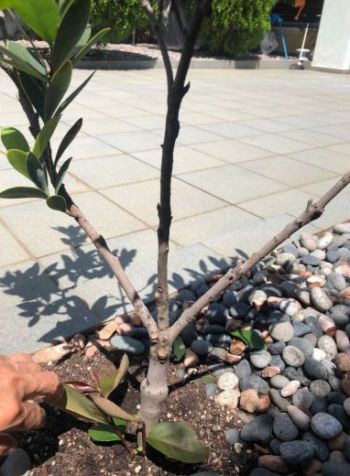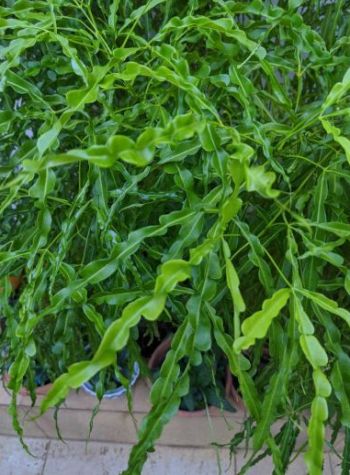Gardening FAQ #20 – What You Need To Know
In this article, we share how to recover from wind burn, what to do with aphids infestation, leaves with essential oils and much more. Let’s go through the common gardening FAQ, problems and solutions you need when growing your plants either indoor and outdoor.
Lady’s finger plants infested with aphids – a common question in gardening FAQ
 My eight lady’s finger plants have been growing well until recently. I notice small yellow insects crawling on the underside of the leaves and the plants seem to have stopped fruiting. I pruned the affected leaves and have been spraying neem oil on the remaining ones for the last three days. What else can I do to bring my plants back to health?
My eight lady’s finger plants have been growing well until recently. I notice small yellow insects crawling on the underside of the leaves and the plants seem to have stopped fruiting. I pruned the affected leaves and have been spraying neem oil on the remaining ones for the last three days. What else can I do to bring my plants back to health?
The pests are likely to be aphids – sap-sucking insects that can weaken plants when they are in large numbers.
Neem oil may provide some control by suffocating them. Usage of such low-toxicity pesticides will help attract natural predators to eat the aphids.
To provide effective control, ensure you inspect your plants regularly and apply repeated sprays of organic pesticides to reduce the pest populations. Good coverage of the plant is essential.
Do rotate neem oil with another pesticide that works in a different mode such as pyrethrins, which kill pests upon contact.
Removing severely affected leaves is a good way to reduce the pest numbers on your plants, but remember not to remove too many leaves. This can be counter-productive as your plant will not be able to photosynthesise efficiently to maintain the vigour needed for growth.
Bird’s nest fern may be suffering from wind burn
 The edges of the leaves on my fern curl like waves and the tips appear pinched and brown. I keep the plant in a windy corridor and it gets some sun during noon. What is wrong with the plant?
The edges of the leaves on my fern curl like waves and the tips appear pinched and brown. I keep the plant in a windy corridor and it gets some sun during noon. What is wrong with the plant?
Your Bird’s Nest Fern (Asplenium nidus) may have suffered from the drying effects of constant winds in your high-rise environment.
In such a situation, the roots of your fern cannot replenish the moisture being lost through its leaves at a fast enough rate.
As a result, the plant suffers from “wind burn”, where foliage first browns around the edges and may cause the leaves to dry up totally. The youngest leaves will usually be affected most severely.
To prevent or reduce the likelihood of wind burn, you may want to relocate the fern to a location that is protected from the wind, but is still able to provide the light your fern needs to grow well.
If you want to grow this under a well-controlled environment, read our post on Guide to Growing Tents.
Leaves of a different shape may be from rootstock
 I notice that this short red gorgeous flower plant has another species with a different type of leaf branching from the main trunk. I initially thought it was just another independent plant with bigger, purplish leaves budding from the ground. But on closer look and after removing some soil, I realise the two stems were indeed branches of the main plant. What causes this and what should I do to ensure the plant is not taken over by a parasite?
I notice that this short red gorgeous flower plant has another species with a different type of leaf branching from the main trunk. I initially thought it was just another independent plant with bigger, purplish leaves budding from the ground. But on closer look and after removing some soil, I realise the two stems were indeed branches of the main plant. What causes this and what should I do to ensure the plant is not taken over by a parasite?
The plant is botanically known as Camellia changii and is a flowering shrub that produces attractive red flowers. It is sold as a grafted plant where its top portion, called a scion, is joined to a suitable rootstock, which is usually a different but related plant.
It is not uncommon for the rootstock to have dormant buds which may produce new growth.
The new growth found on the rootstock can be more vigorous and should be removed so it does not overtake the growth of the scion.
If you want to do such transplant easily, you should explore using grow bags. See my other post on grow bags.
Plants belong to the genus Euodia, have leaves with essential oils
 We have these plant in our garden. What plant is this and do they have any use, such as being able to repel mosquitoes?
We have these plant in our garden. What plant is this and do they have any use, such as being able to repel mosquitoes?
This plant belong to the genus Euodia.
The one with longer and broader leaves is commonly known as Lacy Lady Aralia (Euodia suaveolens).
This plant contain essential oils that are reported to have mosquito-repelling properties.
Like many other plants with essential oils, their insect-repelling effects are apparent only when the oils are released into the surroundings.
This is done, for example, by breaking the leaves and vaporising the oils.
As such, intact plants may not perform as well as mosquito repellents.
For suggestions on how to control another plant worst enemy, head over to our section on Weed & Moss Control.